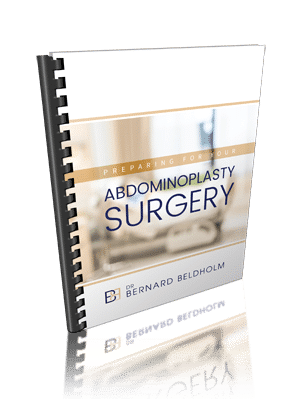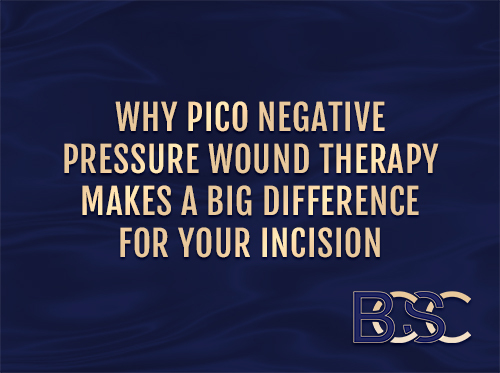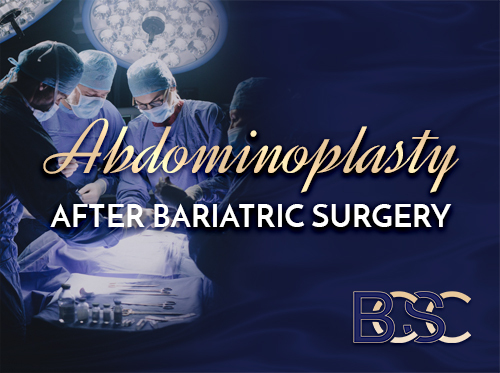Abdominoplasty or Liposuction: What’s Better For Getting a flat tummy?
If you want a flat stomach, there are surgical procedures that can be useful to you. Although none of these processes are for weight loss, both abdominoplasty and liposuction can help you get a flatter abdomen.
But these procedures share similarities and may often be confusing. It is essential to understand how body contouring works before taking the plunge.
So, which procedure should you choose to get the **?
Abdominoplasty (referred to colloquially as a tummy tuck) helps with loose skin and muscles, while liposuction is better suited for stubborn pockets of fat that do not go away even with diet or exercise. The former is invasive, requiring more recovery time, while the latter is less scarring and does not require a long recovery.
Abdominoplasty Vs. Liposuction: What Should You Chose?
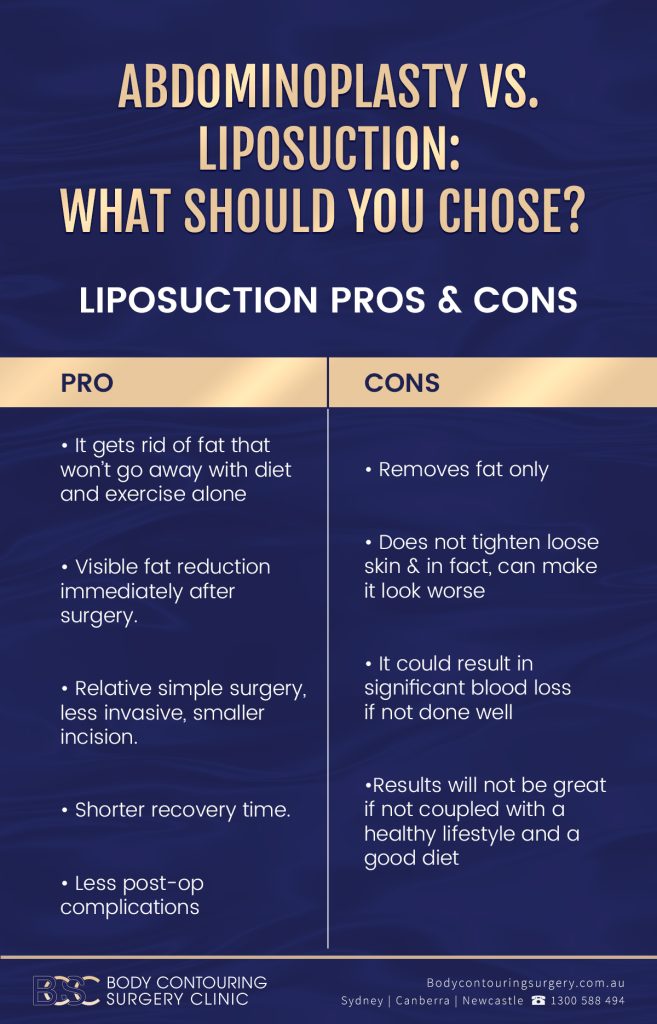
Liposuction or Tummy Tuck for a Flatter Stomach Infographic Liposuction Pros and Cons
That these two procedures share similarities is well discernible. But how do you decide which one you need to get a flatter, fitter, and shapelier stomach? That depends on what your primary goal is.
In layman’s terms, here’s how you can decide what’s better for you:
- A tummy tuck is the surgery you should choose if you want to remove fat from the abdominal area and also ** issues related to ** skin and abdominal muscles.
- Choose liposuction when you have stubborn pockets of fat in and around your stomach but no drooping folds of skin.
Make your choice based on the key differences between these two body contour procedures to get the best results. In either case, you will need several follow up appointments, a quality diet, and exercise post-healing to maintain your body in its top form.
Understanding Body Contouring For a Flatter Stomach
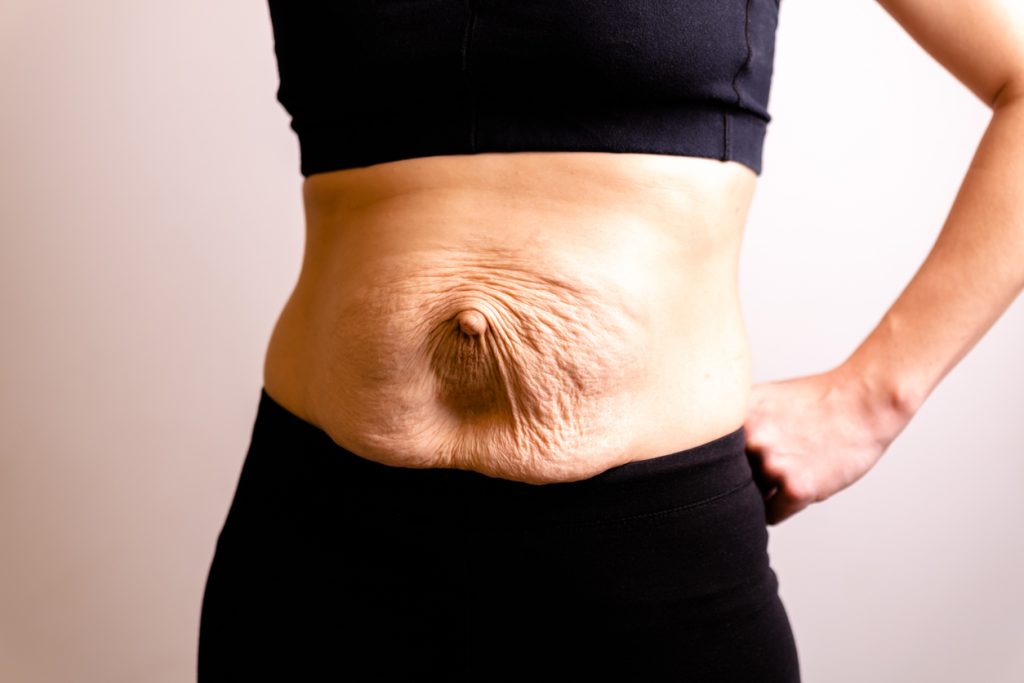
woman with muscle separation (diastasis recti)
Both liposuction and abdominoplasty are body contouring procedures that target problem areas in your body, like stubborn fat and/or loose skin. Undergoing these fat removal surgeries can help you achieve the physical appearance (in this case, a flat stomach).
These cosmetic procedures can also be helpful if you have experienced significant weight loss and have excess ** skin around your abdominal area. You may also have genetically determined poor distribution of fatty tissue in your lower abdomen that can be treated with body contouring.
“When performed by experienced medical professionals under ideal conditions, any body contouring procedure can result in long-lasting effects. You must supplement it with a healthy diet and exercise to prolong the effects of the surgery.”
But body contouring procedures are not lunchtime surgeries. These can range from being minimally invasive to invasive. Therefore all such cosmetic surgeries need consulting, preparation, and ample recovery time.
Before you undergo liposuction or abdominoplasty, ensure that:
- You lead a healthy lifestyle and do not have any chronic health conditions
- Your weight loss has been stable for a year or more
- You have not smoked in at least a month or more
- You have no underlying medical issues that may complicate the process or interfere with your healing
Body contouring surgeries can cost anywhere between AUD 7,000- 35,000.
In short, you must prepare yourself mentally, physically, and financially before signing the dotted line.
Clearly, there’s a lot to consider before undergoing the knife, whether it is liposuction or abdominoplasty. So you need to know what each process entails before taking the call.
Let’s understand each process before deciding which is better for you.
What is Abdominoplasty?
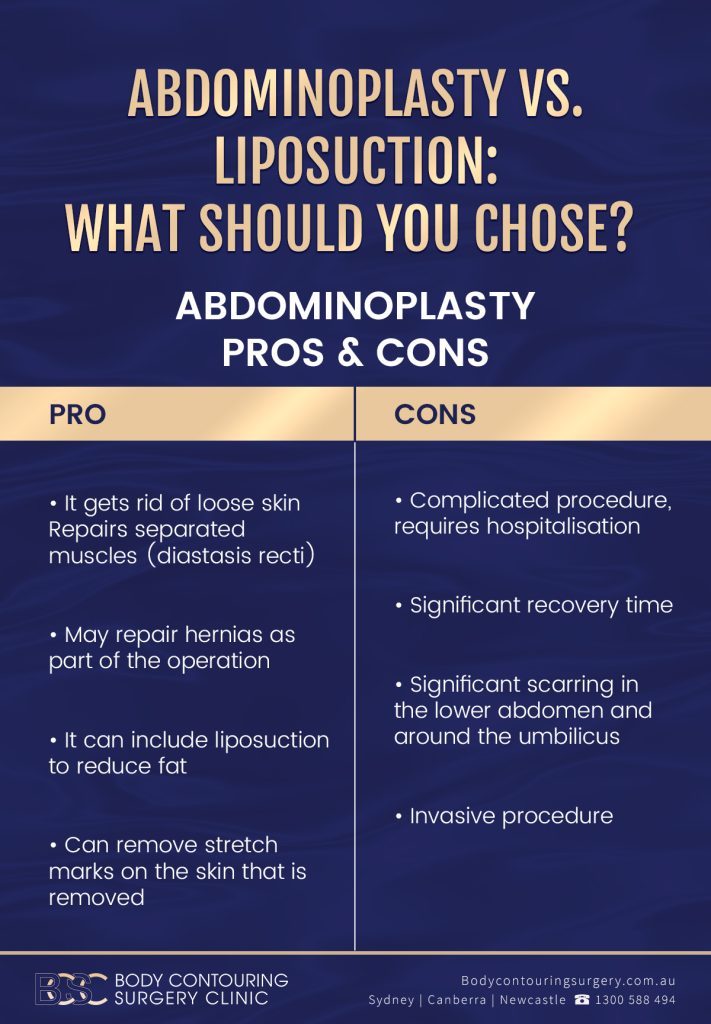
BCSC Liposuction or Tummy Tuck for a Flatter Stomach Abdominoplasty Pros & Cons- Infographic
Abdominoplasty is a surgical procedure that involves removing excess fat and skin from the abdominal area. The procedure also involves tightening the fascia (connective tissues) in the abdomen, giving your tummy a flattened and toned appearance.
You may undergo the following types of abdominoplasty depending on your personal requirements and physique:
Mini Abdominoplasty with or without liposuction
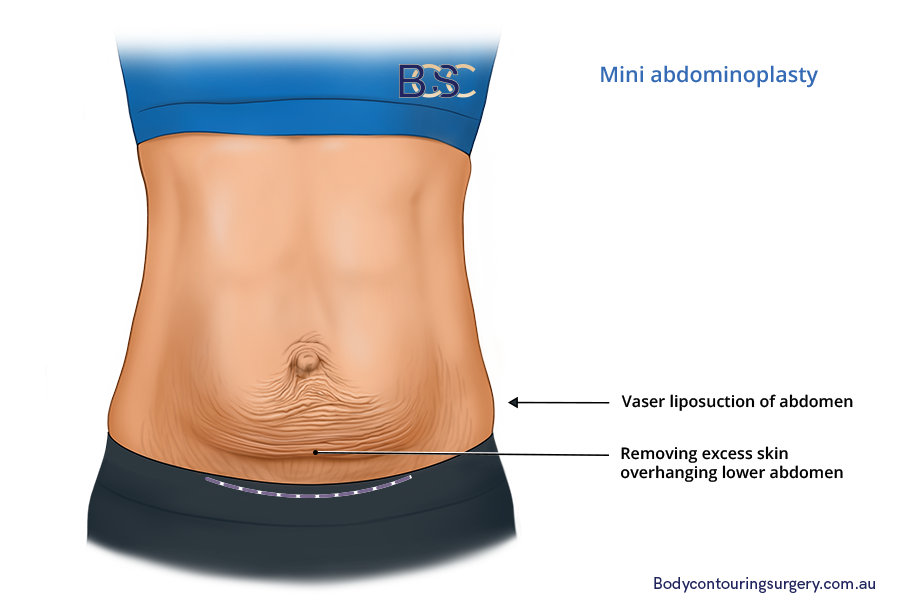
Mini abdominoplasty illustration
This surgery involves smaller incisions. It may take 1-2 hours and works best for people with minimal excess fat and skin.
Full Abdominoplasty with or without liposuction
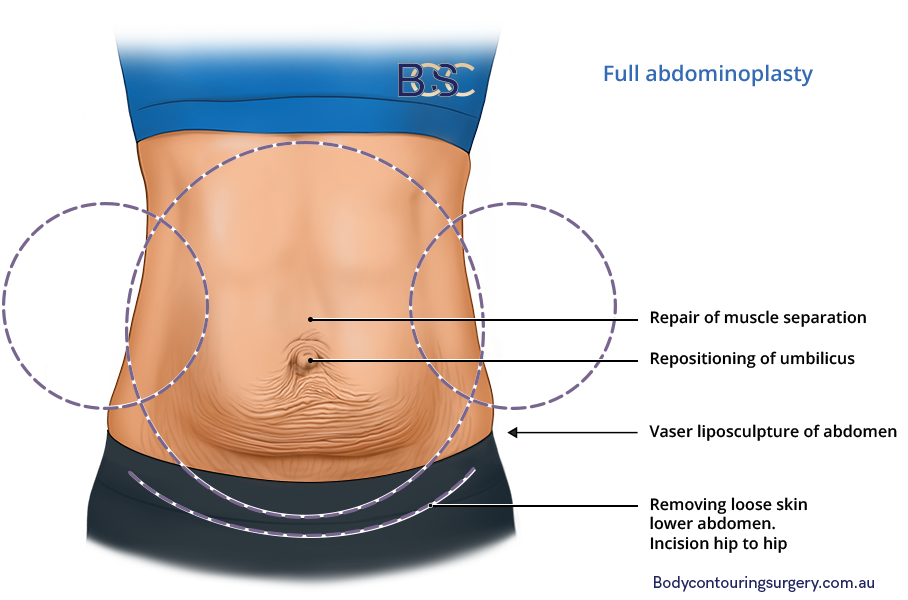
Full abdominoplasty illustration
It requires incisions along the bikini line and around the navel. This aesthetic plastic surgery operation provides optimal removal of excess fatty tissue and can take up to 4 hours.
Extended Abdominoplasty with or without liposuction
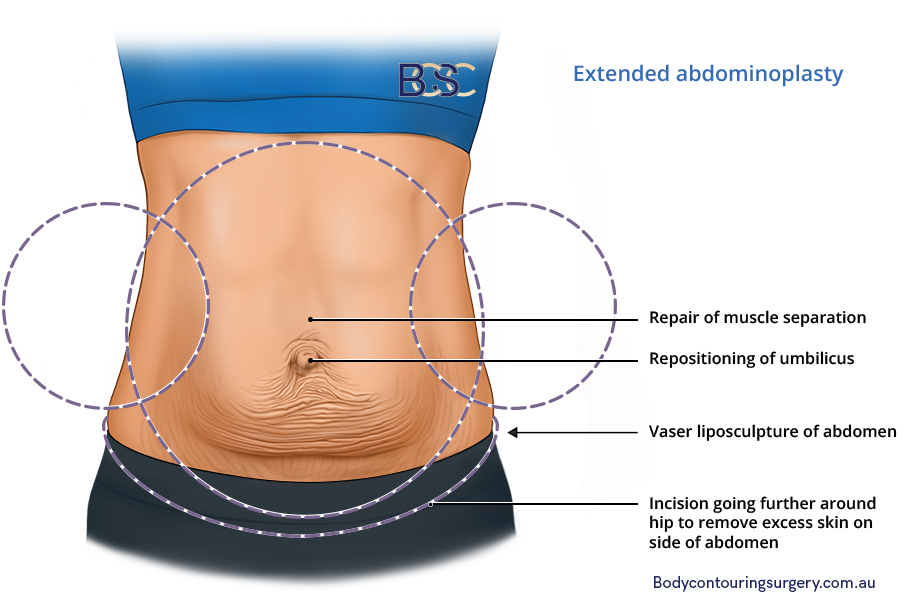
Extended abdominoplasty illustration
Extended abdominoplasty illustration
It requires incisions along the bikini line and extending around the sides of the abdomen as well as around the navel. This aesthetic plastic surgery operation provides optimal removal of excess fatty tissue and can take up to 5 hours.
Circumferential Abdominoplasty with or without liposuction
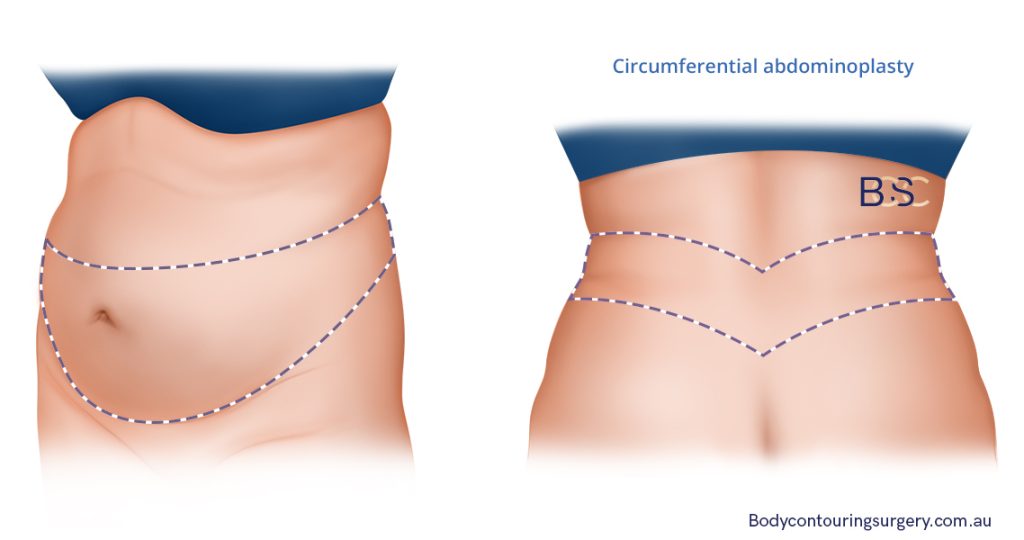
Circumferential Abdominoplasty Illustration
Targeted at excess or stubborn pockets of fat on your abdomen, side and back. In addition to providing you with a flat abdomen, it also lifts the outer thighs and buttock area.
But none of these three body contouring surgeries is an outpatient procedure. All three are invasive procedures that require general anaesthesia, and the recovery process may involve wearing bandages or compression belts.
Abdominoplasty With or Without Liposuction
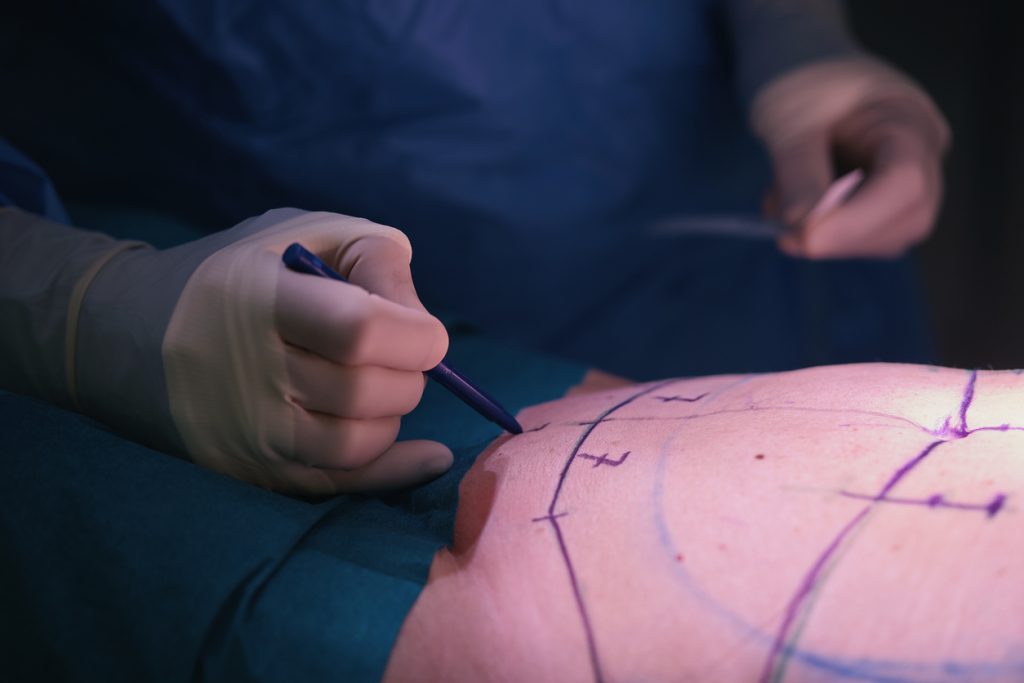
As mentioned above, abdominoplasty can be coupled with liposuction on a case-to-case basis. Extensive research in the field shows that when performed by an experienced professional observing all precautions, it is **. But it is still the most invasive type of body contouring surgery that anyone can undergo.
Given that caveat, when is it advisable to perform the procedures in tandem with each other?
If you have stubborn pockets of fat in your lower or upper abdomen, love handles, etc., combining the processes can help you remove the fat and get taut skin. Essentially, you get the benefits of both processes.
Without mincing words, it’s not a ** surgery by any means and has a significant recovery period as well. The surgery may take anywhere between 4-6 hours and will be performed under general anaesthesia.
Who Can Get Abdominoplasty?
Any person, man or woman, can undergo abdominoplasty to get a flatter and toned abdomen. In fact, it is one of the most common plastic surgeries performed in Australia after breast surgeries.
Indications for tummy tuck surgery (Abdominoplasty)
- Those suffering from chronic obesity who have undergone massive weight loss and have loose skin
- Women who have had multiple deliveries, whether normal or C-sections and have excess skin
- Eradicating post-pregnancy or significant weight loss-induced stretch marks
- Women with muscle separation (diastasis recti)
- Any patient that has excess fat as well as loose abdominal skin
Please note that it’s advisable not to undergo abdominoplasty if you’re planning a pregnancy in the future.
The abdominal tissue will stretch as your body experiences growth during pregnancy. In such cases, you may need another abdominoplasty after fully recovering post-pregnancy.
Similarly, delay abdominal plastic surgery if you plan on a heavy weight loss routine.
Risks and Side Effects

Top 10 complications after abdominoplasty surgery
Since abdominoplasty is an invasive procedure, it has risks and side effects. Please consult your specialist surgeon (FRACS) before you schedule your surgery. However, even under the most experienced surgeons, you may experience the following:
- Scarring: The scar from the incisions is permanent, although it will fade over time. You need to consult your doctor without further ado if it does not
- Seroma: Post the surgery, the abdominal region may experience fluid accumulation leading to a seroma. But the incidence of this can be reduced with the help of drainage tubes
- Hematoma: Blood clots at the incision site are a common occurrence. However, a hematoma is treatable with medicines
- Skin sensitivity: You may also experience a change in the degree of skin sensitivity around the operated area
- Poor Healing: Each of us has varying degrees of healing; for some, it may take longer than others. It’s still advisable to follow all the instructions given by your doctor to avoid any kind of infection
- Fat necrosis: Although rare, some fatty tissues may “die” after the procedure, leading to necrosis. If you notice hard lumps of skin on or around the incision, you’ve experienced fat necrosis and need to visit the doctor at the earliest
What is Liposuction?
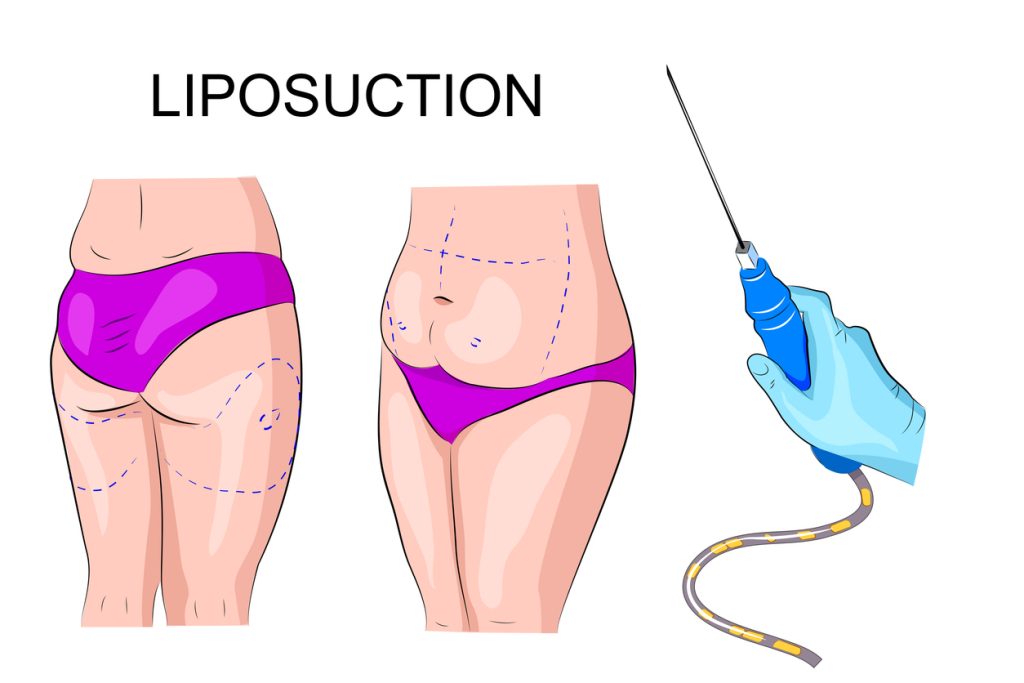
Liposuction
It is another cosmetic body contouring technique in which stubborn fat found in different body parts, including the abdominal region, is surgically “sucked away.” The procedure can remove unwanted fat from the inner thighs, hips, back, buttocks, upper arms, face, neck, cheeks, chin, calves, and even ankles.
If you have stubborn pockets of fat that you’re unable to lose with exercises or dieting, liposuction can help eliminate it.
However, unlike abdominoplasty, it won’t be helpful in contouring excess or ** skin. Another critical difference is that liposuction can be performed in many problem areas from your head to toe. But as its name suggests, abdominoplasty is only for your stomach area.
What’s the science behind liposuction?
Liposuction removes surplus fatty cells in the target area with the help of a cannula and a high-intensity vacuum pump. It involves the following steps:
Step 1: Infiltration
You will be injected with a wetting solution. Usually, there are three types of wetting solutions – wet, super wet, and tumescent. The wetting solutions help with pain relief and reduce blood loss associated with liposuction.
The super wet and tumescent solutions cause the least amount of blood loss, in the range of 1-4% of the overall amount of tissue removed.
However, wet solutions can cause blood loss of around 4-30% under certain circumstances. Refer to your specialist surgeon to explore the best option for your surgery.
Step 2: Inserting the Probe
Once the target is prepped with the wetting solution, a probe is inserted into those tissues. Depending on your specialist surgeon, this could be a laser or a VASER probe, but both perform the same function – these devices heat the tissues to melt accumulated fat and tighten the skin in the area.
While VASER (vibration amplification of sound energy at resonance) uses ultrasound, the laser uses light energy turned to heat to work on fatty tissues.
Step 3: Removing the Fat
In the last and final step, the loose fat is removed from your body with the help of a cannula. While a wide variety of cannulas are available based on size, tip, and usability, some can be power-assisted.
The type of cannula used, like a basket, single-port, blunt-tipped, etc., usually depends on your specialist surgeon and the target area from which you want to remove fat.
In addition, there’s also dry liposuction which does not make use of any fluids. It is an outdated practice and is rarely used now because it results in maximum blood loss.
Despite these facts, the good thing is that lipo is far less invasive than abdominoplasty, and people with good skin tone can make a speedy recovery as the skin reshapes itself over the operated area.
Remember that liposuction may not show great results if you have stretch marks, thin, or aging skin. You can still eliminate excess fat, but your skin will not remodel itself seamlessly post-surgery.
You will need an abdominoplasty to ** any stretch marks or ** skin you get after liposuction.
Who Can Get Liposuction?
As with abdominoplasty, any otherwise ** individual with stubborn pockets of fat in the face, torso, legs, or arms can go for liposuction. The results, however, will vary according to your age and skin condition.
It is also wise to note that liposuction is a spot treatment, not a remedy for tackling obesity. You cannot treat cellulite with liposuction either; it is only effective for fat tissue.
Risks and Side Effects of Liposuction

Top 10 complications after liposuction surgery
Even though liposuction is less invasive, with less scarring, it does not mean it’s risk-free. The possible risks and side effects include:
- Contour Irregularities: You may notice small bumps and uneven skin tone in the treated area, especially if your skin has started to lose its natural elasticity
- Fat Embolism: Since all types of liposuction work by breaking down the fat into smaller pieces, sometimes these can get stuck in your blood vessels. In rare cases, a fat embolism can affect your kidney or heart function.
- Medicinal Toxicity: Another significant risk is experiencing lidocaine toxicity. Lidocaine is the most commonly used anaesthetic; sometimes your body can retain too much of it, leading to nerve or muscle toxicity. But this is rare.
You can also experience some scarring, seroma, or skin sensitivity, as you would with abdominoplasty. But side effects will always be a part of any cosmetic procedure, and it’s something that a specialist surgeon will be able to better advise you on.
Instead, focus on pre and post-operation care to avoid complications. In most cases, you can go home within a few hours of the surgery, but please ensure you have a friend or a family member to drive you.
Avoid strenuous exercises, like heavy weight lifting, for as long as your doctor advises, but indulge in regular activities to prevent the formation of blood clots.
Be extra cautious of dressing the area and changing the bandages, especially if you have a drainage duct attached to your incision. Do not take any medication that your surgeon has not prescribed.
Follow your medical practitioner’s instructions and be rest assured that you will recover in due course of time.
